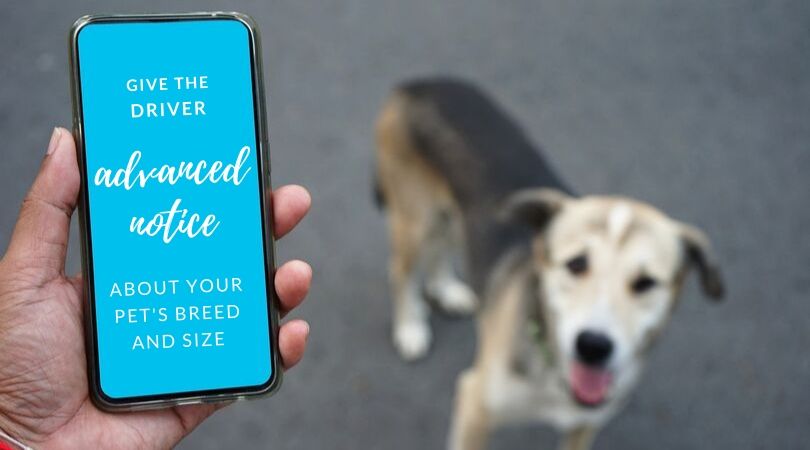"Can I Take My Dog in an Uber?": Pets & Rideshares or Public Transportation
With many people now choosing to use public transportation and rideshares rather than buying a car, the question of how to bring a pet along for the ride is becoming much more frequently asked. What are the rules and best practices of traveling with a dog or cat when you’re not in a privately-owned vehicle?
Traveling with Your Pet
There are many reasons that you might need to take your pet in a rideshare or on public transportation. Maybe you’re going to a pet-friendly restaurant or park that’s too far to walk to. Maybe your pet needs some primping at the groomer - or even emergency veterinary care. Whatever the reason, there are a few different options for you when riding with Rover or sightseeing with Spot.
Service Animals vs. Emotional Support Animals
First and foremost, by law Uber, Lyft, taxis, buses, etc. must always allow you to bring a service dog with you. According to the Americans with Disabilities Act (ADA), “A service animal means any dog that is individually trained to do work or perform tasks for the benefit of an individual with a disability, including a physical, sensory, psychiatric, intellectual, or other mental disability… A person traveling with a service animal cannot be denied access to transportation, even if there is a ‘no pets’ policy.”
Emotional support animals and non-dogs are not legally required to be allowed in public transportation or rideshares. The ADA cites “emotional support animals, comfort animals, and therapy dogs are not service animals under Title II and Title III of the ADA. Other species of animals, whether wild or domestic, trained or untrained, are not considered service animals either.”
Pets on Public Transportation
 When it comes to taking your (non-service animal) pet on the bus, train, or subway, there isn’t one all-encompassing rule. For example, Amtrak allows pets on its trains, but only four pets are allowed per train (first come, first served). For all NYC public transportation, pets must be “enclosed in a container and carried in a manner which would not annoy other passengers.” San Francisco doesn’t require pets to be enclosed; however, dogs on their cable cars, MUNI buses, and subways must be on-leash and muzzled for safety.
When it comes to taking your (non-service animal) pet on the bus, train, or subway, there isn’t one all-encompassing rule. For example, Amtrak allows pets on its trains, but only four pets are allowed per train (first come, first served). For all NYC public transportation, pets must be “enclosed in a container and carried in a manner which would not annoy other passengers.” San Francisco doesn’t require pets to be enclosed; however, dogs on their cable cars, MUNI buses, and subways must be on-leash and muzzled for safety.
Most likely, you will have to check ahead of time with the specific company or system’s pet policy. If you’re planning to take your pet on public transportation, consider these final tips before going:
- Socialize your pet: Make sure your pet is comfortable around other humans and animals to ensure there isn’t a disturbance while en route to your destination.
- Bring along any necessary health records: Avoid any problems in your chosen mode of transportation by bringing proof of up-to-date immunizations, health treatments, and/or preventative care.
- Do your homework: As mentioned above, always check the pet policy before going anywhere so you’re not caught unprepared at the last minute. Some forms of transport don’t allow soft carriers and require a hard case. Others might require a muzzle or charge an extra fee.
Pets in Uber or Lyft
Uber and Lyft are two popular alternatives to taxis or public transportation, so what’s their policy on pets? According to Uber, service animals must always be allowed to ride in an Uber, but for other pets, including emotional support animals, it’s mainly up to the driver. Other than when required by law, your Uber or Lyft driver has the final say whether you bring Fluffy along for the ride.
There are a few things you can do to possibly sway your driver into saying yes to a pet passenger:
- Give the driver advanced notice: When you first request a ride, use the app’s option to message or call the driver and let them know you’re traveling with your pet. Uber encourages pet owners to be as specific as possible about their pet’s breed and size, so the driver can be sure to know whether their vehicle is big enough for both the animal and human.

- Walk before you ride: Try to prepare your pet for the car ride by exercising them beforehand. This will allow them to relieve themselves before getting in the Uber/Lyft and can also give them a chance to get rid of some extra energy before having to sit still for a while.
- Protect the driver’s moneymaker: Even the cleanest pet is bound to shed or have an accident from time to time. Bring an old sheet or towel with you for your pet to sit on in your Uber or Lyft. Or for smaller pets, consider transporting them in a carrier. If you let the driver know ahead of time that you’re bringing backup, this could change a doubtful driver’s mind. They will definitely appreciate you keeping their ride clean, and you can also avoid any costly cleaning charges.
- Show your appreciation: If your driver goes out of their way to let you take your pet with you, let them know that you appreciate it. You can add a bigger tip than usual to the fare, or even better – leave them a good review! Lyft and Uber drivers depend on good ratings and reviews to continue getting business, so make sure you leave your courteous courier a top review. (This is also helpful for other riders looking for transportation with their pets.)
Make Your Ruff Ride Rewarding
Taking your pet in a rideshare or on public transportation doesn’t have to be unpleasant. By doing a little research and preparing ahead of time, you can ensure that everyone has a great experience. One last tip: bring along your pet’s favorite treats, a blanket, or whatever helps them remain calm and self-occupied, and you’ll have one happy pet traveler.


